A Lease Termination Letter is a formal notice to end a tenancy agreement. This letter serves as a means of communication between a landlord and tenant, outlining the reason for termination and the date on which the lease agreement will come to an end. Whether initiated by the landlord or the tenant, a Lease Termination Letter is a necessary step in the process of ending a tenancy and ensuring a smooth transition for both parties involved.
Table of Contents
Lease Termination Letter Templates
Simplify the process of ending a lease agreement with our comprehensive collection of Lease Termination Letter Templates. Whether you are a landlord or a tenant, these templates provide a hassle-free solution for crafting professional and legally compliant lease termination letters. With our customizable templates, you can easily draft letters to terminate residential or commercial leases, ensuring that all necessary details and legal requirements are addressed.
From specifying termination dates to outlining reasons for termination, our templates cover various scenarios and enable you to communicate your intentions clearly and effectively. With just a few simple edits, you can personalize the content to fit your specific situation and generate a well-crafted lease termination letter in minutes. Our templates are designed to save you time and effort while ensuring that your lease termination process is conducted in a professional and legally appropriate manner. Take advantage of our Lease Termination Letter Templates and confidently navigate the process of ending a lease agreement.
Why Should You Use a Lease Termination Letter
![Free Printable Lease Termination Letter Templates [Tenant, Landlord] Word 1 Lease Termination Letter](https://www.typecalendar.com/wp-content/uploads/2023/04/Lease-Termination-Letter.jpg 1414w, https://www.typecalendar.com/wp-content/uploads/2023/04/Lease-Termination-Letter-212x300.jpg 212w, https://www.typecalendar.com/wp-content/uploads/2023/04/Lease-Termination-Letter-724x1024.jpg 724w, https://www.typecalendar.com/wp-content/uploads/2023/04/Lease-Termination-Letter-768x1086.jpg 768w, https://www.typecalendar.com/wp-content/uploads/2023/04/Lease-Termination-Letter-1086x1536.jpg 1086w)
Using a lease termination letter has several benefits, including:
Clarity and Documentation: A written lease termination letter provides clear documentation of the termination, including the date and reason for ending the tenancy.
Legal Protection: A lease termination letter protects both the landlord and tenant legally by clearly outlining the terms of the termination and any obligations that must be met before the termination takes effect.
Avoiding Confusion: A lease termination letter helps avoid confusion and misunderstandings by providing clear and concise information about the end of the tenancy agreement.
Smooth Transition: A well-written lease termination letter can help ensure a smooth transition between tenants, allowing both parties to prepare for the end of the tenancy and make arrangements for the return of keys, inspection of the property, and other relevant matters.
Compliance with Laws and Regulations: A lease termination letter ensures compliance with local, state, and federal laws and regulations governing tenancy agreements and helps protect against any potential legal issues.
Formal Communication: A lease termination letter serves as a formal communication between the landlord and tenant, establishing a clear and professional tone for the end of the tenancy.
Future Reference: A lease termination letter serves as a valuable reference for both the landlord and tenant in case of any future disputes or legal issues.
Timely Reminder: A lease termination letter serves as a timely reminder to both parties about the end of the tenancy and any related responsibilities or obligations.
Clear Expectations: A lease termination letter sets clear expectations for both the landlord and tenant about the end of the tenancy and helps avoid any misunderstandings or miscommunications.
Protects Reputation: A lease termination letter helps protect the reputation of both the landlord and tenant by establishing a professional and respectful manner for the end of the tenancy agreement.
Types of Lease Termination Letter
Lease termination letters can be classified into several types, depending on the reason for termination and the party initiating it:
Landlord Termination Letter: This type of letter is issued by the landlord to the tenant, indicating the landlord’s intention to end the tenancy agreement due to reasons such as non-payment of rent, breach of lease terms, or the expiration of the lease.
Tenant Termination Letter: This type of letter is issued by the tenant to the landlord, indicating the tenant’s intention to end the tenancy agreement due to reasons such as moving to a new location, a change in personal circumstances, or dissatisfaction with the property.
Mutual Termination Letter: This type of letter is issued by both the landlord and tenant, indicating mutual agreement to end the tenancy agreement. This may be due to a variety of reasons, such as the sale of the property or the need for repairs.
Early Termination Letter: This type of letter is issued by either the landlord or tenant, indicating a desire to end the tenancy agreement before the lease expiration date. This may be due to a change in personal circumstances, such as a job relocation, or for other reasons.
Eviction Termination Letter: This type of letter is issued by the landlord to the tenant, indicating the landlord’s intention to initiate eviction proceedings due to reasons such as non-payment of rent or breach of lease terms.
It is important to note that the specific requirements and procedures for issuing lease termination letters vary by jurisdiction, so it is important to review the applicable laws and regulations before issuing a lease termination letter.
What does a lease termination letter include?
- The date of the letter and the names of the landlord and tenant.
- The address of the rental property.
- The date on which the lease agreement will end.
- The reason for termination, whether it be due to the expiration of the lease, breach of contract, or any other cause.
- Details of the notice period, as specified in the lease agreement.
- Any conditions or obligations that must be met before the termination takes effect.
- The signature of the person issuing the termination letter.
- Any other relevant information, such as instructions for returning keys or arrangements for final inspection of the property.
The aim of a lease termination letter is to clearly and concisely communicate the end of the tenancy agreement and ensure that both parties are on the same page about the next steps.
How to Write a Lease Termination Letter
Here is a step-by-step guide on how to write a lease termination letter:
- Start with the date: Write the current date at the top of the letter.
- Include the recipient’s address: Address the letter to your landlord or property manager. Use the correct mailing address.
- Open with a formal salutation: Start the letter with a formal greeting such as “Dear [Landlord’s Name],”
- State your intention to terminate the lease: Clearly state that you intend to terminate your lease agreement, and include the date that you plan to vacate the property.
- Give notice: Provide the required notice period as specified in your lease agreement. Most states require a 30-day notice for monthly rental agreements, but the notice period can be different for other types of leases.
- Provide a reason for termination: If you have a valid reason for ending the lease early, such as a job loss or a move, you can provide this information, but it is not necessary.
- Confirm your responsibility: Confirm that you understand that you are responsible for all rent payments and other obligations until the end of the lease, or until a new tenant is found.
- Offer to help: Offer to assist in finding a new tenant or to show the property to prospective renters.
- Close the letter: End the letter with a closing such as “Sincerely” or “Best regards,” and sign your name.
- Keep a copy: Keep a copy of the letter for your records.
Remember to be professional and respectful in your letter, and to follow the specific requirements of your lease agreement.
Tips for Writing Your Lease Termination Letter
Here are some tips for writing your lease termination letter:
Follow the lease agreement: Make sure you understand the terms of your lease agreement and follow any requirements for giving notice.
Be clear and concise: State your intention to terminate the lease in a clear and concise manner. Avoid using overly formal or legal language.
Be polite: Use a professional and respectful tone in your letter, even if you have had disagreements with your landlord in the past.
Provide proper notice: Provide the required notice period as specified in your lease agreement.
Provide a forwarding address: Include your forwarding address in the letter so that the landlord can send your security deposit and any other final correspondence.
Keep a copy: Keep a copy of the letter for your records and make sure to send it via a method that provides proof of delivery.
Double check for errors: Review your letter for any spelling or grammatical errors before sending it.
By following these tips, you can ensure that your lease termination letter is professional and effective in communicating your intention to end your lease agreement.
Sample Lease Termination Letter
[Your Name]
[Your Address]
[City, State ZIP Code]
[Date]
[Landlord’s Name]
[Landlord’s Address]
[City, State ZIP Code]
Dear [Landlord’s Name],
I am writing this letter to formally inform you of my intention to terminate my lease agreement for [property address]. According to the terms of our agreement, I am required to provide [number of days notice] days’ notice before vacating the property.
As you are aware, my lease agreement is set to expire on [lease expiration date], but I have decided to end the agreement early and vacate the property on [vacation date]. This decision is based on [reason for termination, if applicable].
I would like to confirm that I understand my responsibilities under the lease agreement and will fulfill all of my obligations, including payment of rent and utilities, until the end of the lease or until a new tenant is found.
If it is helpful, I am willing to assist in finding a new tenant or to show the property to prospective renters. I have already forwarded my forwarding address to the [Landlord/Management Company] for the return of my security deposit.
Please let me know if there is anything else I need to do to properly terminate the lease and ensure a smooth transition.
Thank you for your understanding and I look forward to resolving this matter promptly.
Sincerely,
[Your Signature]
[Your Printed Name]
FAQs
How much notice should I give in my lease termination letter?
The amount of notice required will depend on the terms of your lease agreement. Most states require a 30-day notice for monthly rental agreements, but the notice period can be different for other types of leases.
How do I send my lease termination letter?
You should send your lease termination letter by certified mail or another method that provides proof of delivery, such as registered mail. Keep a copy of the letter for your records.
What happens after I send my lease termination letter?
After you send your lease termination letter, your landlord or property manager may respond with any additional requirements or procedures that need to be followed before the lease can be terminated. It is important to follow these steps carefully to avoid any disputes or misunderstandings.
Can I terminate my lease before the end date?
Whether you can terminate your lease before the end date depends on the terms of your lease agreement. Some lease agreements include an early termination clause, while others do not. If you have any questions or concerns, it is best to speak with your landlord or review the lease agreement.
What happens if I don’t provide proper notice in my lease termination letter?
If you don’t provide proper notice, you may be in breach of your lease agreement and may be liable for any damages or penalties outlined in the agreement. It is important to follow the terms of your lease agreement and provide the required notice period.
What happens to my security deposit when I terminate my lease?
Your security deposit will be returned to you at the end of your lease agreement, unless there are any damages or unpaid rent that need to be deducted. Your lease agreement should outline the process for returning the security deposit.
What if my landlord disputes my lease termination letter?
If your landlord disputes your lease termination letter, you may need to seek mediation or legal assistance. Having a clear and well-written lease termination letter can help to avoid misunderstandings and disputes.
Can I change my mind after I send a lease termination letter?
If you change your mind after sending a lease termination letter, you should communicate this to your landlord as soon as possible. Your landlord may have already taken steps to find a new tenant, so it is important to discuss any changes with them to determine the next steps.
Can I use a lease termination letter to end my lease early?
Yes, a lease termination letter is a formal way to end your lease agreement early. Just be sure to follow the terms of your lease agreement, provide the required notice period, and provide a clear and concise explanation for ending the lease early.









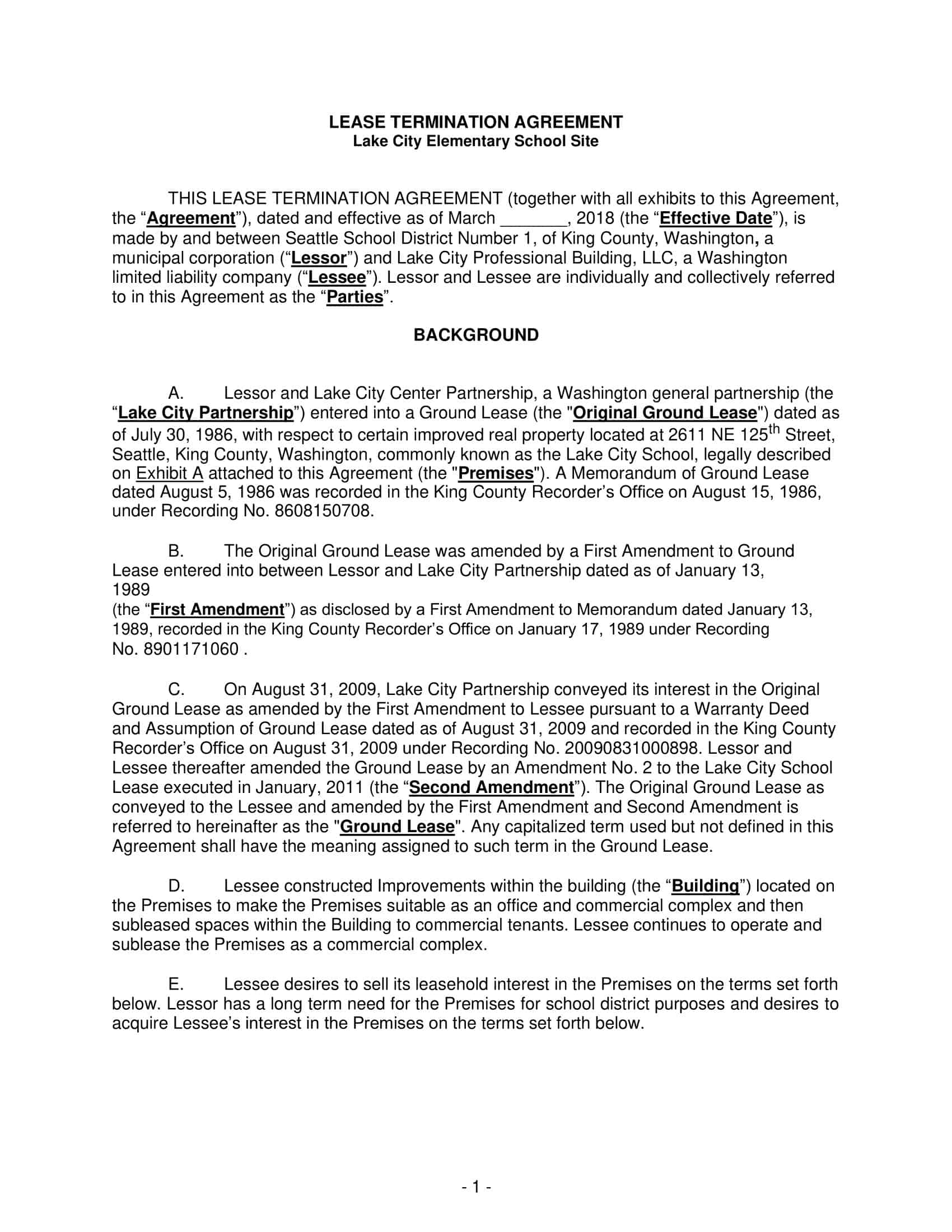





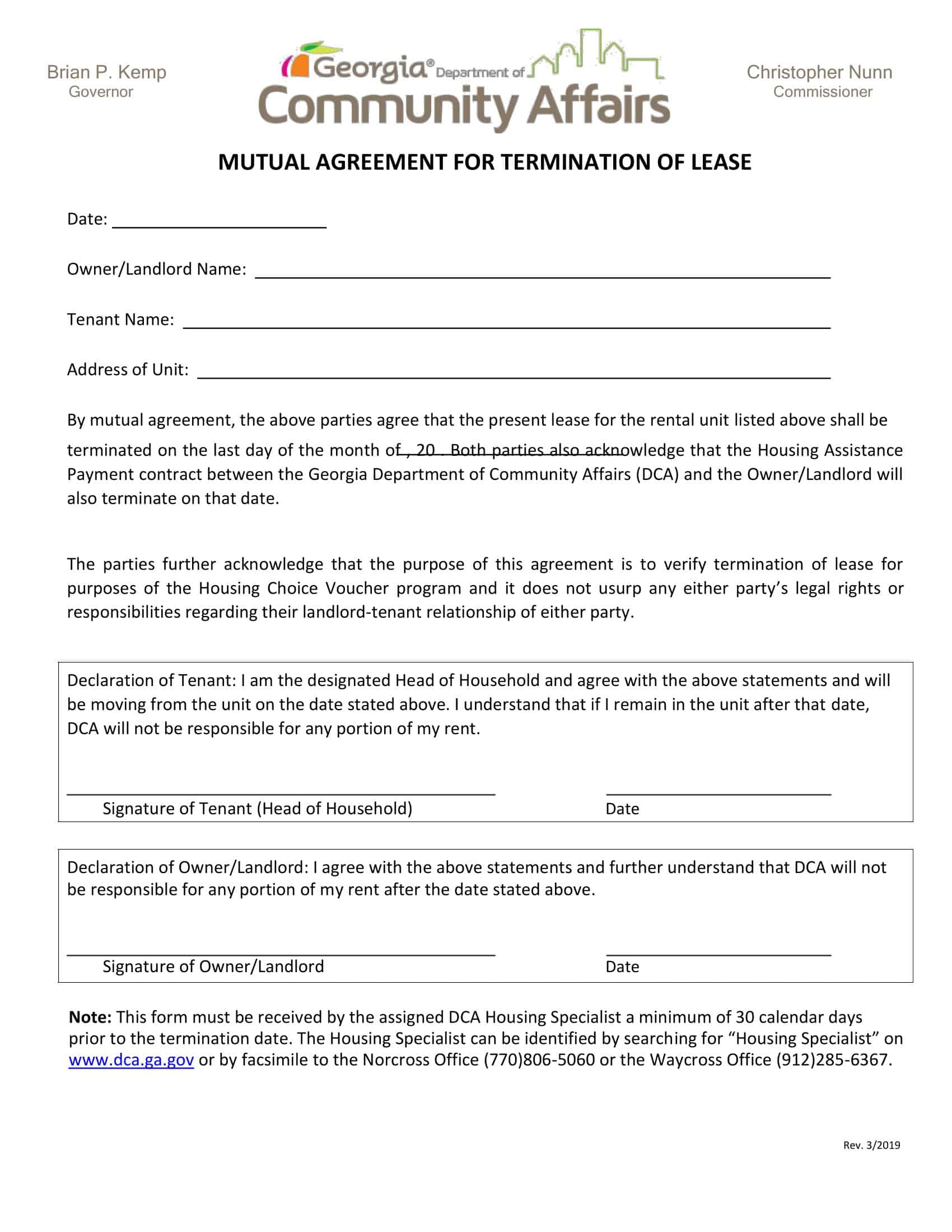










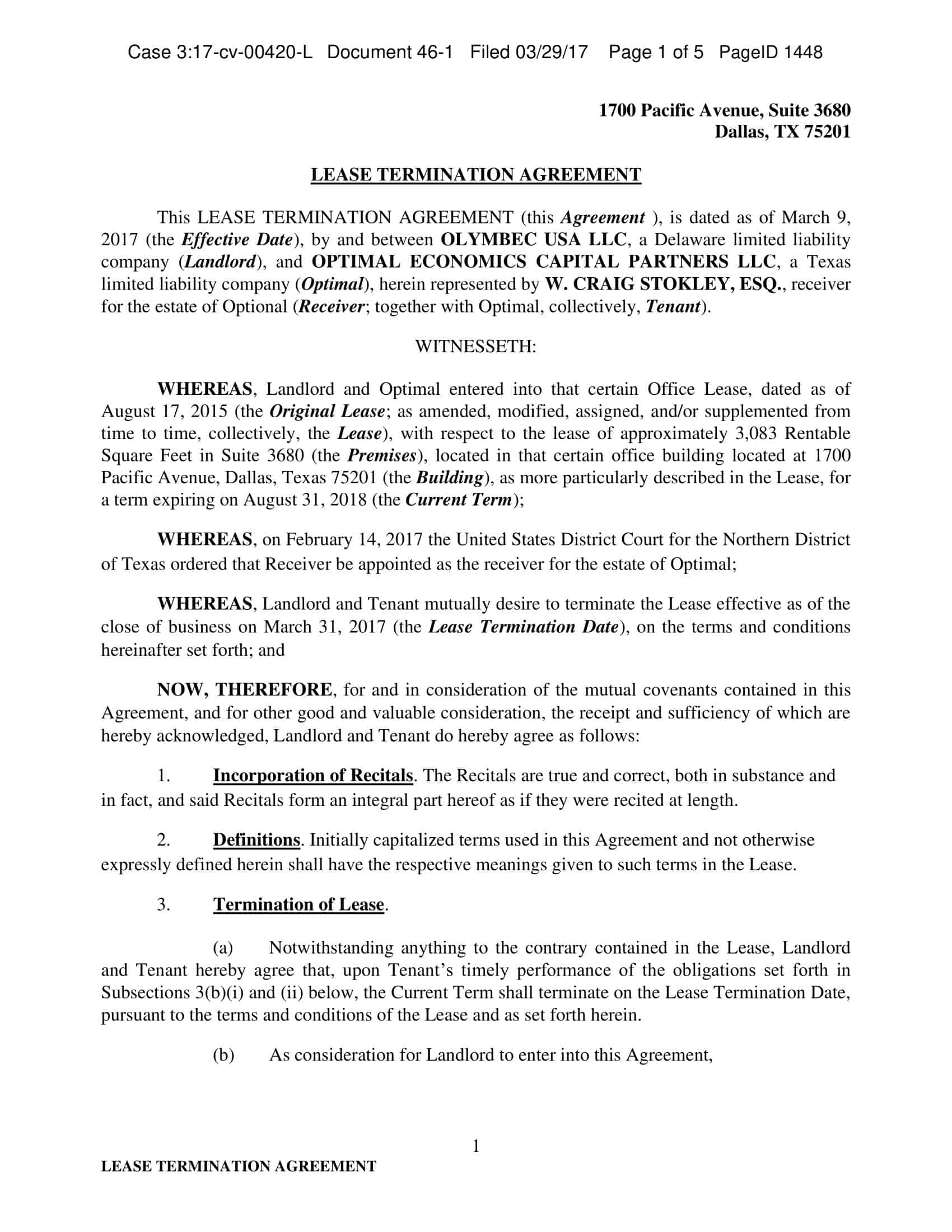






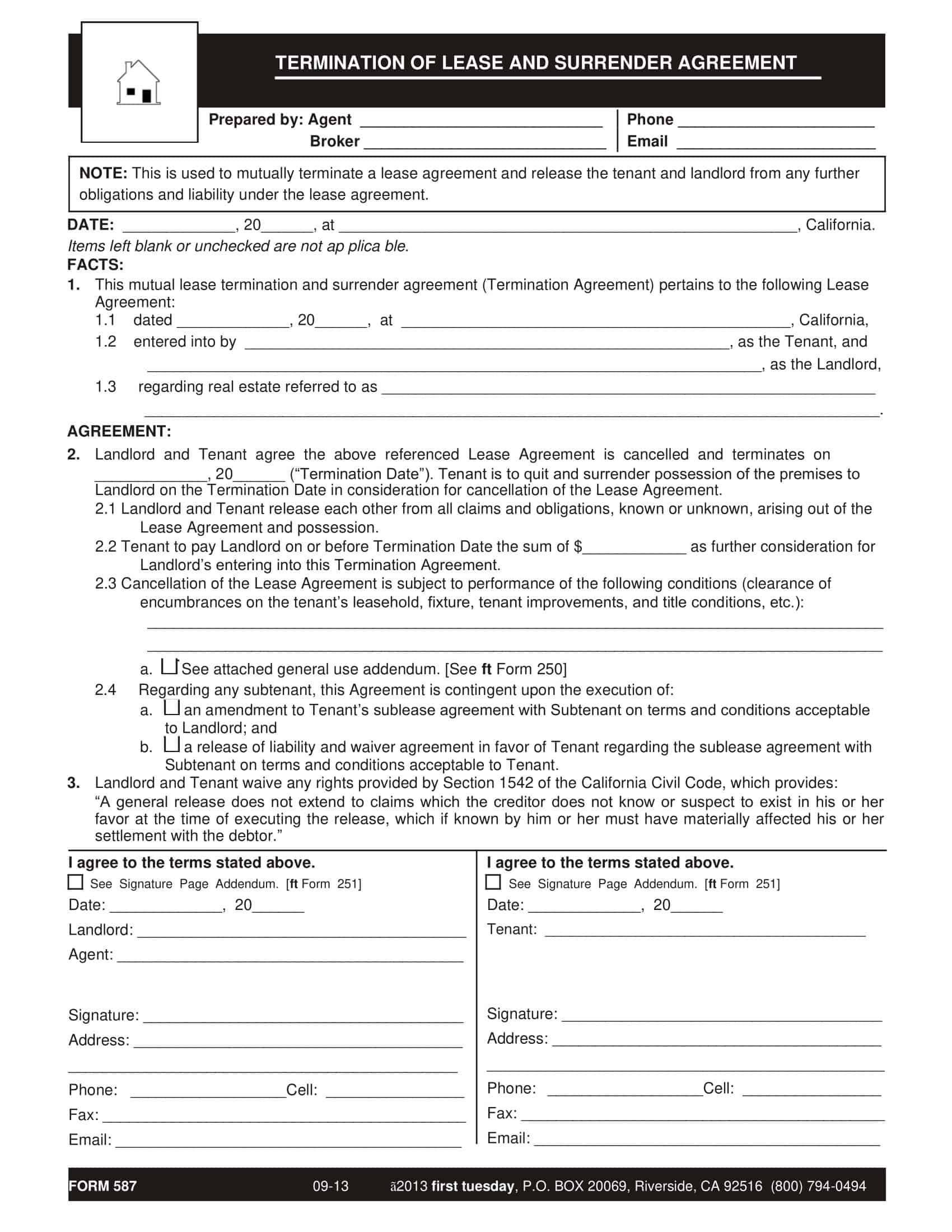
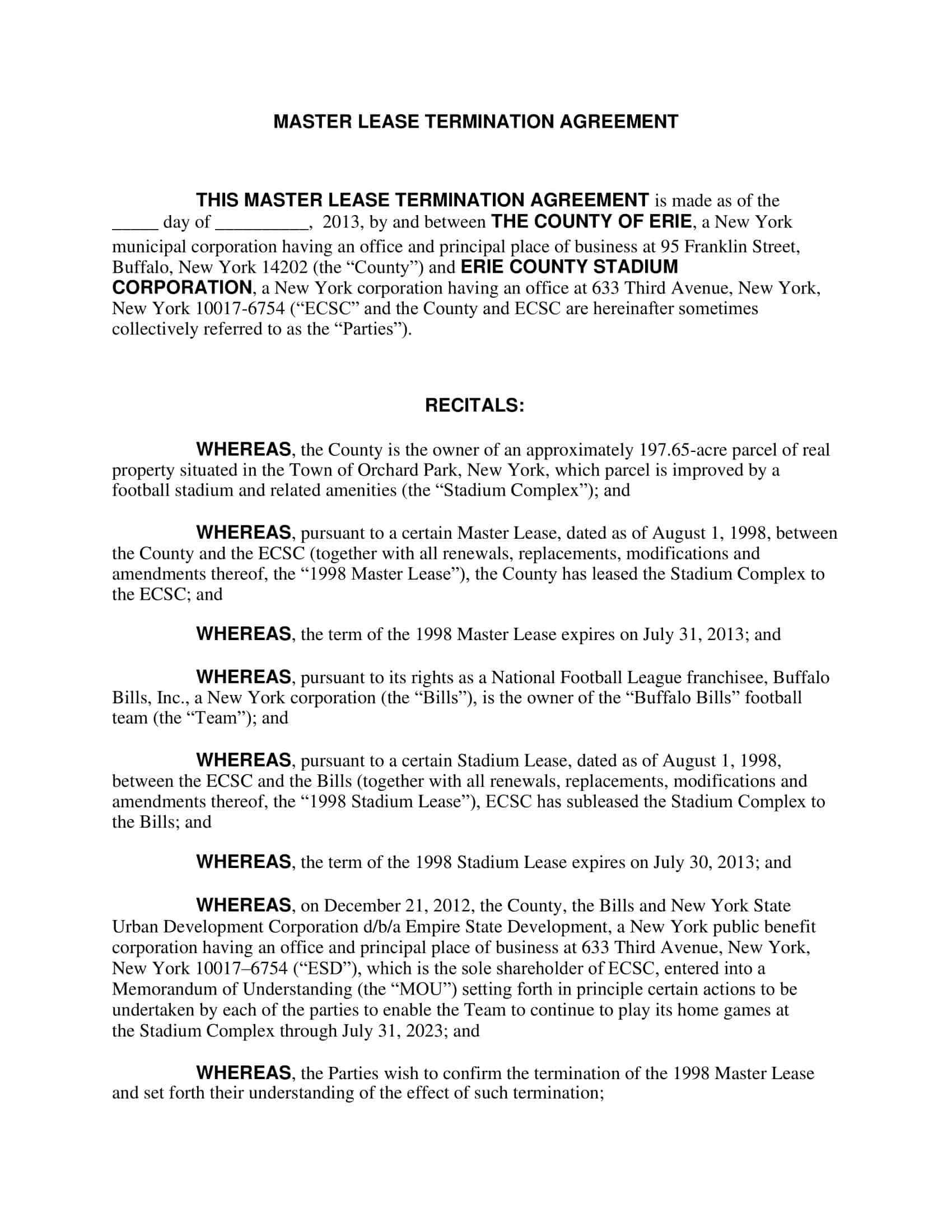







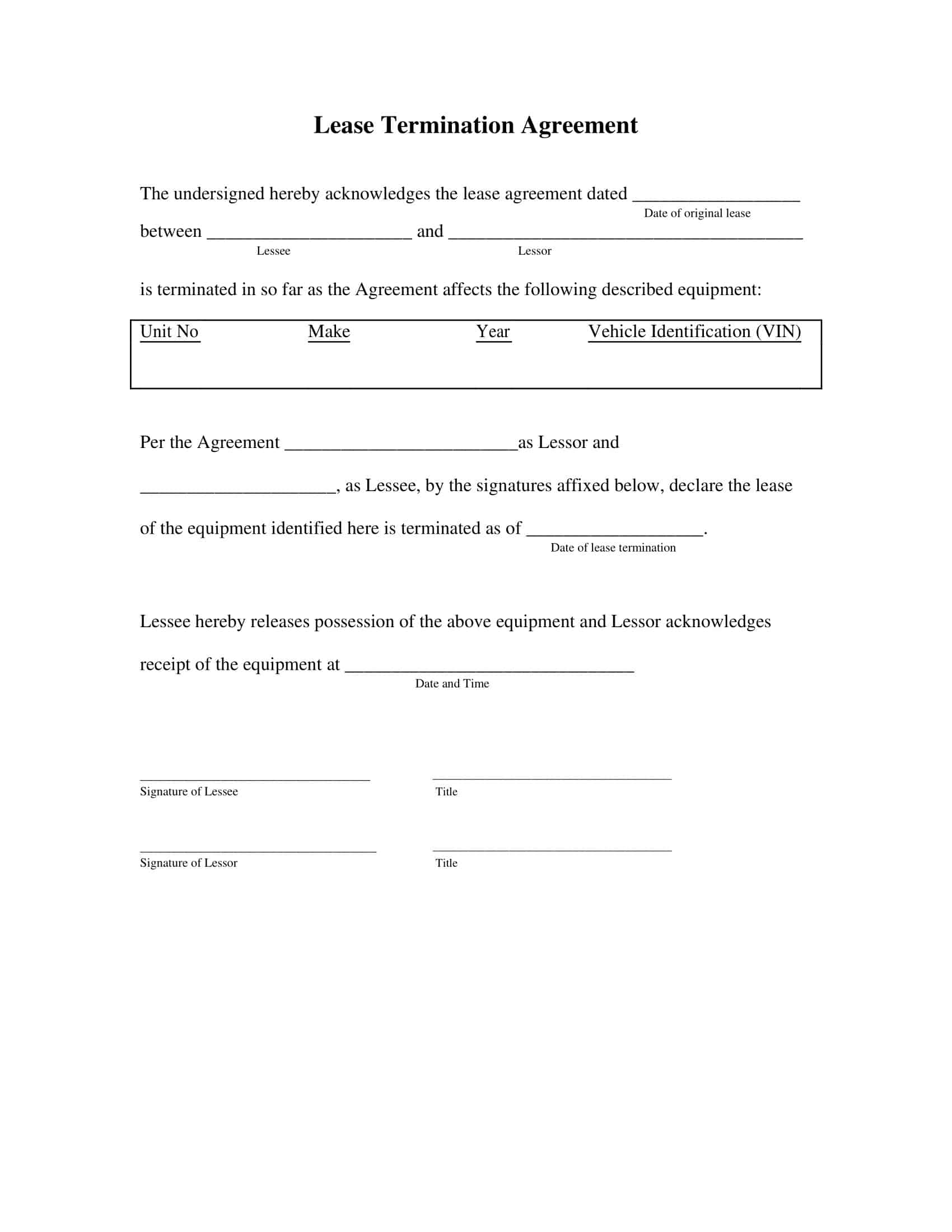

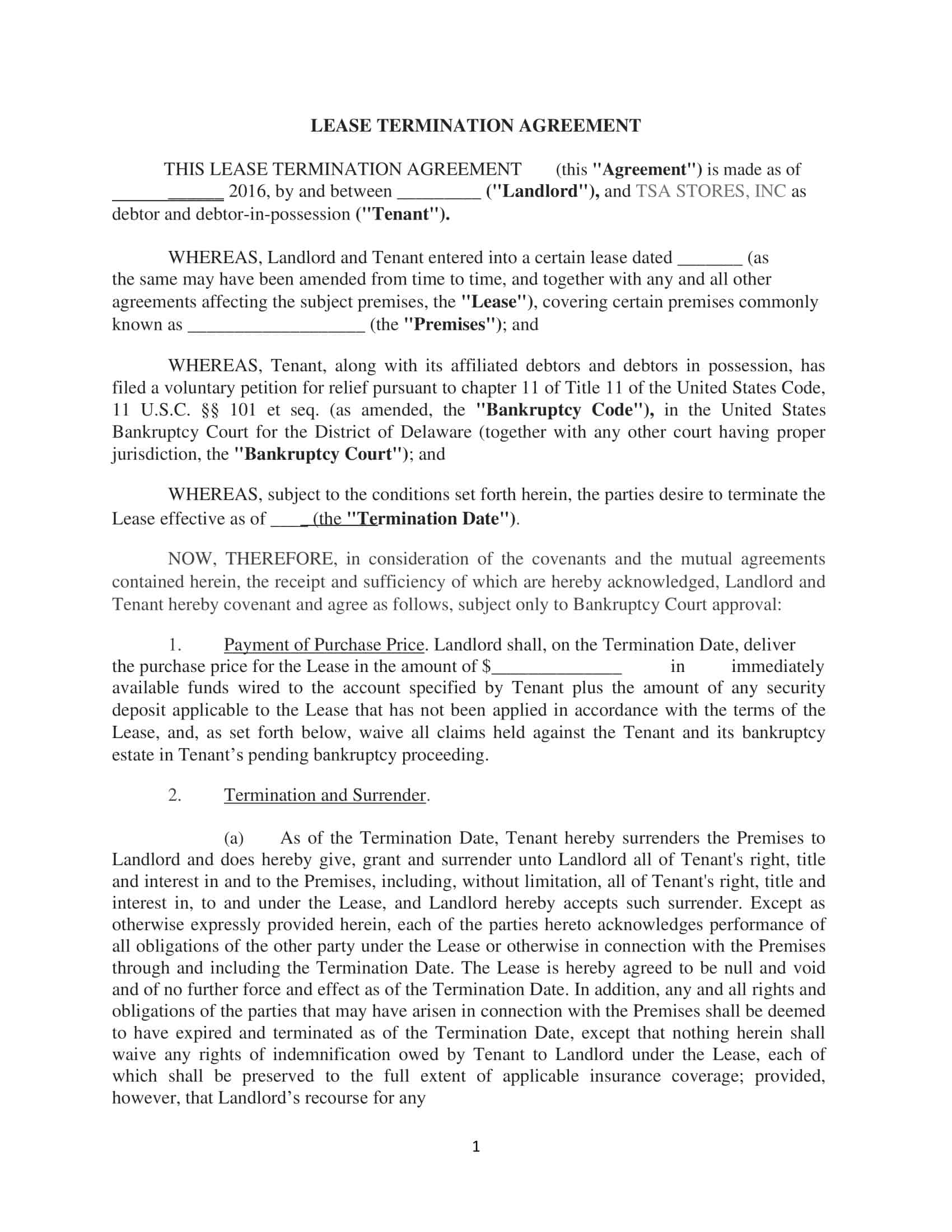


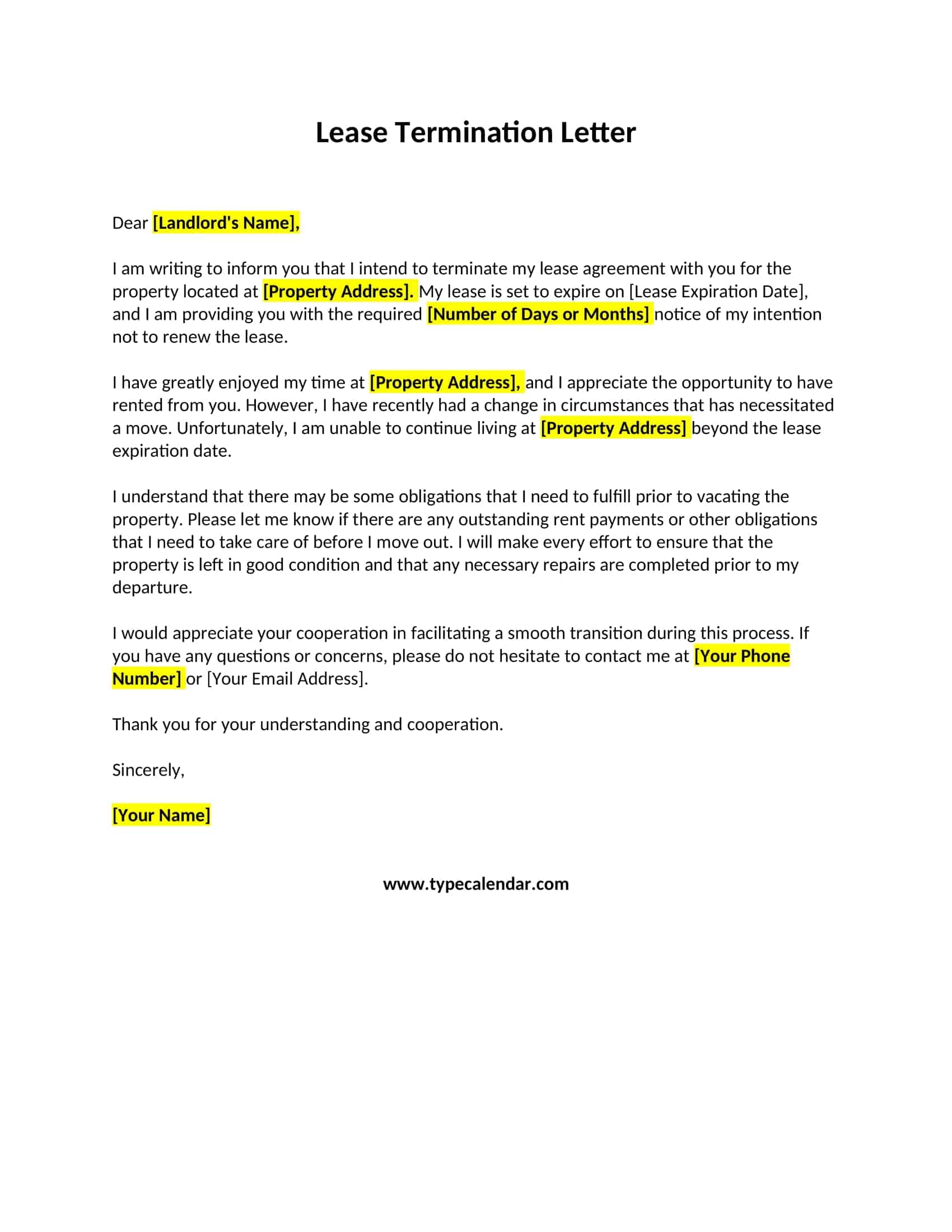



![Free Printable Termination Letter Templates [Word, PDF] Employee 2 Termination Letter](https://www.typecalendar.com/wp-content/uploads/2023/04/Termination-Letter-150x150.jpg 150w, https://www.typecalendar.com/wp-content/uploads/2023/04/Termination-Letter-1200x1200.jpg 1200w)
![Free Printable Friendly Letter Templates [PDF, Word, Excel] 1st, 2nd, 4th Grade 3 Friendly Letter](https://www.typecalendar.com/wp-content/uploads/2023/05/Friendly-Letter-150x150.jpg 150w, https://www.typecalendar.com/wp-content/uploads/2023/05/Friendly-Letter-1200x1200.jpg 1200w)
![Free Printable Congratulation Letter Templates [PDF, Word] Examples 4 Congratulation Letter](https://www.typecalendar.com/wp-content/uploads/2023/05/Congratulation-Letter-150x150.jpg 150w, https://www.typecalendar.com/wp-content/uploads/2023/05/Congratulation-Letter-1200x1200.jpg 1200w)
